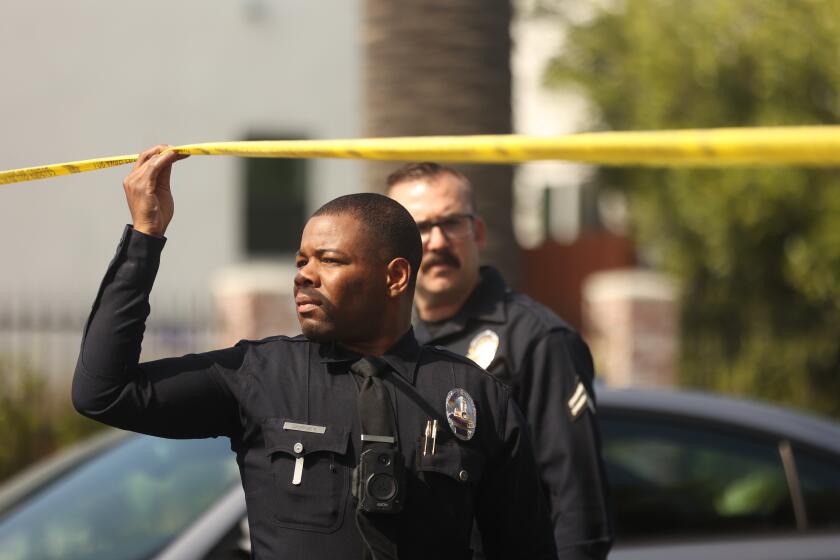City Delays Payment of $135 Million to Playa Vista
- Share via
Facing protests about potentially explosive methane gas and public subsidies for the developer, city officials Wednesday suspended approval of $135 million in financing for the Westside’s sprawling Playa Vista development.
The action by the City Council’s Budget and Finance Committee cheered longtime critics of the project. But officials cautioned that they might ultimately recommend release of the funds next week.
The bond funds, which already have been approved but not yet disbursed, would be used to construct roads, a storm water runoff system and habitat for migratory birds at the Playa del Rey development.
The delay, officials said, will allow them to study complaints by environmental groups that strongly oppose the project. Specifically, council members said they wanted further explanation about how developers planned to monitor and vent methane gas at the site, information on claims that vented gas could cause illness among residents, and details on the city’s funding liability.
“I get concerned that we give environmental issues in this city short shrift,” said City Councilman Mike Feuer. “Not this time.”
The complaints of environmentalists follow the recent release of a city-ordered report on methane gas at the site. While officials at the city Department of Building and Safety insist that the report concludes the project is safe--provided the developer installs a network of gas vents and alarms--critics contend that the city is ignoring a potential disaster.
Instead of the land being developed, environmentalists want it set aside as a nature preserve. Developers say that idea is preposterous.
At Wednesday’s hearing, project opponent Marcia Hanscom of the Wetlands Action Network said the city only recently learned to take the issue of methane gas seriously. She referred to the decision to abandon construction of the Belmont Learning Complex for the same reason.
“For years this issue has been laughed at, but no one’s laughing anymore,” Hanscom said. “We don’t know if any of these mitigation measures are going to work.”
Another critic, Michelle Sypert of the Sierra Club, took issue with the idea of developers using public funds for a private development. The backers of the project, Morgan Stanley Dean Witter and Goldman Sachs, should bankroll the development themselves, she said.
“Giving $135 million to the rich developers of Playa Vista isn’t equitable to the other citizens of the city. It’s the worst kind of corporate welfare.”
The $135 million would come in the form of Mello-Roos bonds, and would be used during construction of the first 3,200 residential units. (Mello-Roos bonds are repaid by tax assessments on residents who ultimately live in the project.) Overall, developers have requested $428 million in public financing for the project.
At the hearing, building and safety officials said the developer’s mitigation system would be the most advanced in the city, consisting of a series of alarms and monitors. Information on gas, which can build up to dangerous levels over a period of months, also would be posted on the Internet. Department of Building and Safety officials Andrew Adelman and David Hsu repeatedly assured council members that building at the site was safe.
Although project critics have predicted methane-related disasters, some council members expressed skepticism. Methane gas, they said, is found throughout the city.
For example, Councilwoman Rita Walters said, although the Ross clothing store in the city’s Fairfax district suffered a methane gas explosion in the 1980s, gas venting systems have corrected the problem, and the chain continues to operate an outlet there.
“It’s just humming along,” Walters said of the store. “The parking lot is always full and there’s no fear.”
But Walters said she was concerned about one critic’s claim that the city’s liability on the bonds was excessive and risky.
Developers of the project said they weren’t dismayed by the committee’s decision to study the matter further. David Herbst, a vice president for Playa Capital, said developers are used to the close scrutiny and objections, and said these forces would make Playa Vista “the safest” development in the city.
“This just proves once again that Playa Vista is the most reviewed project in the city, and we’re just continuing to move forward,” Herbst said. As for the bonds, he said they were insured to give the city extra protection.
Like most hearings on the project, tempers flared at times. It heightened shortly after the hearing when developers got word that a false press release had been distributed to newspapers and wire services. The release contended that the project’s backers had decided to sell it to an environmental group so that it could be made into a park.
More to Read
Sign up for Essential California
The most important California stories and recommendations in your inbox every morning.
You may occasionally receive promotional content from the Los Angeles Times.














